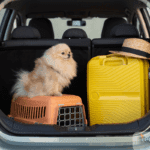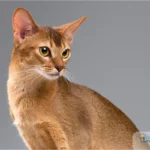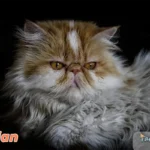Affectionate Cat Breeds
Did you know that cats can form emotional bonds as strong as dogs? According to recent feline behavior studies, certain cat breeds are naturally predisposed to being more affectionate, with some spending up to 60% of their day seeking human interaction.
In this comprehensive guide, you’ll discover:
- The science behind cat affection
- Top 10 most affectionate cat breeds with detailed profiles – Expert tips for choosing your ideal companion
- Expert tips for choosing your ideal companion
- Essential care guidelines for each breed
- Real owner experiences and success stories
Before bringing home your new feline friend, make sure to read our complete guide to cat-proofing your home and check our vet-approved new cat supply checklist.
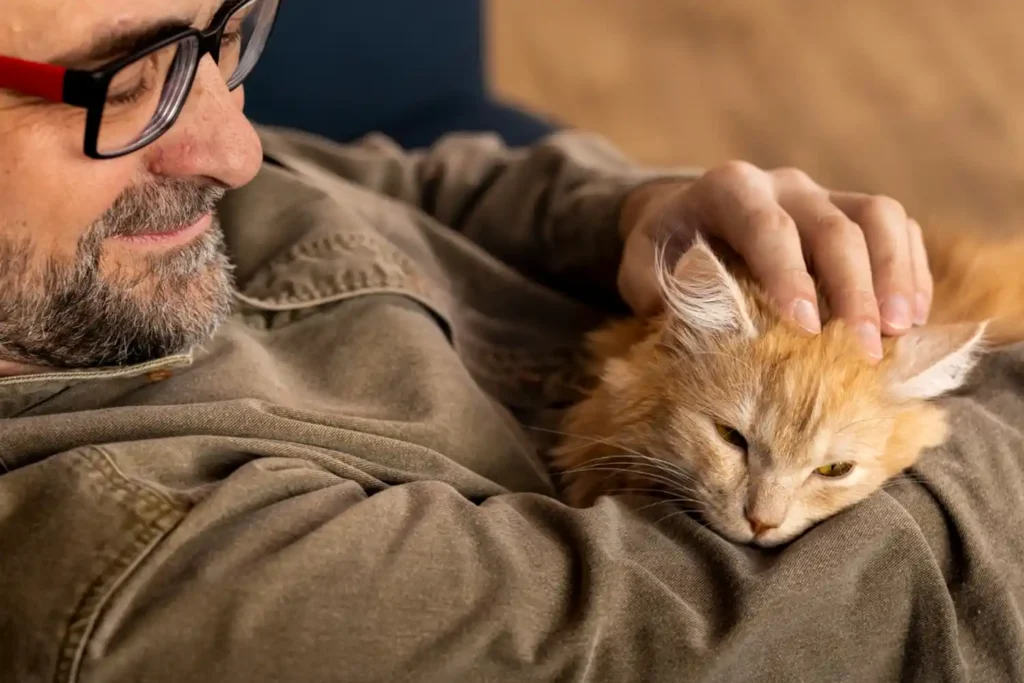
Understanding Cat Affection
How Cats Show Love
Cats express affection in various ways:
- Bunting: Gentle head bumps are a sign of trust and marking you as family
- Loyal Presence: Following you around or choosing to sleep near you
- Vocal Communication: Special meows and purrs reserved for their humans
- Slow Blinks: Often called “cat kisses,” these are signs of trust and affection
- Kneading: A behavior from kittenhood showing comfort and contentment
Factors Influencing Cat Affection
Several key elements shape how affectionate a cat becomes:
- Genetics: Breed predispositions play a role in personality traits
- Early Socialization: Positive experiences in the first 12 weeks are crucial
- Environment: A stable, enriching home environment encourages trust
- Human Interaction: Regular, positive interactions build stronger bonds
🐾 Tailwaggors Tip:
Remember that individual personality, early socialization, and environment play crucial roles in shaping a cat’s affectionate nature. While certain breeds are predisposed to being more affectionate, every cat is unique.
The Science of Cat-Human Bonding
Recent research reveals fascinating insights about cat-human relationships:
- Cats can recognize their owners’ voices among strangers
- They demonstrate secure attachment patterns similar to dogs and children
- Cats adapt their behavior to match their owners’ personalities
- Regular positive interaction increases oxytocin levels in both cats and humans
🩺 Veterinary Insight:
While genetics play a role in personality, understanding feline anxiety and stress can help you better support your cat’s emotional well-being. For optimal health and behavior, proper nutrition is crucial – explore our evidence-based veterinary guide to cat nutrition.
Creating a Bond with Your Cat
To nurture a strong emotional connection:
- Respect your cat’s boundaries
- Maintain consistent daily routines
- Provide positive reinforcement
- Create safe spaces throughout your home
- Engage in interactive play sessions
- Use gentle voices and movements
Find Your Perfect Affectionate Cat Breed
What’s your living space?
How much time can you dedicate to grooming?
Activity level preference?
Your Recommended Cat Breed
Top 10 Most Affectionate Cat Breeds
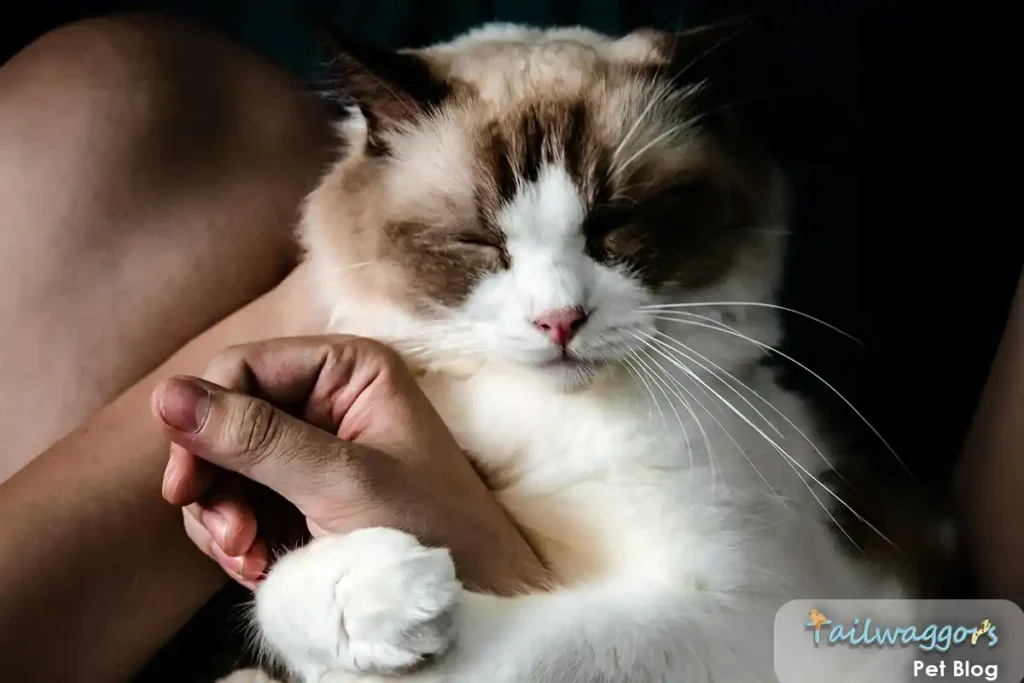
1. Ragdoll: The Ultimate Lap Cat
The Ragdoll cat breed consistently ranks as one of the most affectionate cat breeds, earning their charming name from their unique tendency to go limp and relaxed when held, just like a child’s ragdoll. These gentle giants, weighing 10-20 pounds, combine impressive size with an extraordinarily sweet disposition.
Key Traits:
- Exceptional lap cat tendencies and deep devotion to family
- Patient and gentle with children and other pets
- Moderate grooming needs with silky, semi-long fur
- Calm, gentle temperament ideal for indoor living Known for following their humans from room to room
- Striking blue eyes and color-point coat patterns
🩺 Veterinary Insight: Ragdolls typically live 12-15 years and are generally healthy, though they can be prone to hypertrophic cardiomyopathy (HCM). Regular veterinary checkups are essential for early detection of any heart issues.
Perfect For:
- Families with children
- Multi-pet households
- Indoor-only environments
- Those seeking a constant companion
- First-time cat owners
- People working from home
🐾 Tailwaggors Tip: While Ragdolls are known for their laid-back nature, they still need daily play sessions to maintain physical and mental health. Interactive toys and climbing spaces help prevent obesity and keep them engaged.
Daily Care Requirements:
- Brushing: 2-3 times per week
- Interactive play: 15-20 minutes, twice daily
- Fresh water and high-quality food
- Regular nail trimming and dental care
- Plenty of scratching posts and climbing options
Common Personality Traits:
- Highly sociable and people-oriented
- Adaptable to new situations
- Quiet and gentle vocalization
- Intelligence with an easy-going nature
- Strong bonds with family members
- Playful well into adulthood
For detailed grooming instructions and tips, check our comprehensive Ragdoll grooming guide. Learn how to maintain their beautiful coat and keep them looking their best with professional grooming techniques you can do at home.
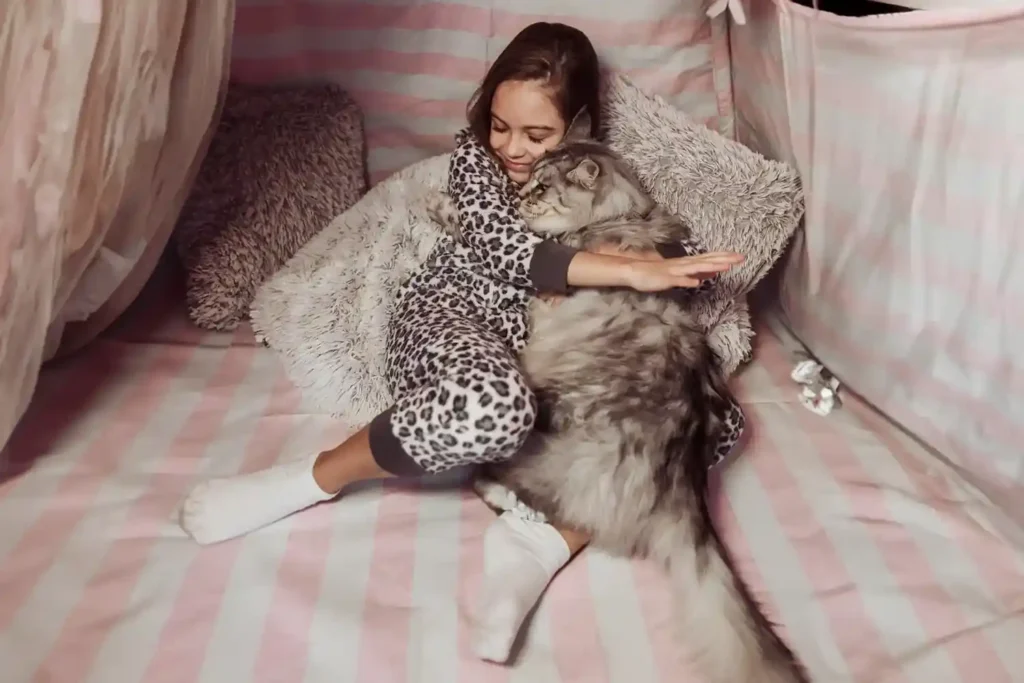
2. Maine Coon: The Gentle Giant
The Maine Coon, America’s native longhair cat, truly earns its nickname as the “gentle giant” of the feline world. These majestic cats can reach weights of 8-18 pounds for females and 13-25 pounds for males, making them one of the largest domestic cat breeds. Despite their imposing size, they’re renowned for their sweet, friendly disposition.
Key Characteristics:
- Strong family bonds and loyal companionship
- Excellent with children and other pets
- High emotional intelligence with dog-like devotion
- Playful yet gentle nature lasting into adulthood
- Distinctive tufted ears and lynx-like appearance
- Water-resistant, shaggy coat built for harsh climates
🩺 Veterinary Insight: Maine Coons typically live 12-15 years. Regular screening for hip dysplasia and hypertrophic cardiomyopathy (HCM) is recommended, as these conditions can be more common in the breed. Their large size also means they need proper nutrition to maintain healthy joint function.
Perfect For:
- Active families
- Multi-pet households
- Those wanting a large, impressive cat
- People seeking an interactive companion
- Homes with plenty of space
- Cold climate dwellers
🐾 Tailwaggors Tip: Despite their large size, Maine Coons are known as “gentle giants” for good reason. They’re careful not to knock things over and are incredibly patient with children, earning them the nickname “dogs of the cat world.”
Daily Care Requirements:
- Brushing: 3-4 times weekly (daily during shedding seasons)
- Exercise: Active play sessions daily
- Environmental enrichment: Climbing spaces and scratching posts
- Regular nail trimming and ear cleaning
- Large litter boxes to accommodate their size
- High-quality protein-rich diet suited for large breeds
Notable Personality Traits:
- Sociable without being demanding
- Patient and tolerant
- Intelligent problem-solvers
- Gentle vocalization with distinctive chirps and trills
- Strong hunting instincts
- Adaptable to family routines
For detailed guidance on maintaining their magnificent coat, explore our comprehensive Maine Coon grooming guide. Learn professional techniques for managing their thick, water-resistant fur and preventing matting.
Exercise and Enrichment:
- Water play opportunities (many Maine Coons enjoy water)
- Interactive toys for mental stimulation
- Cat trees and high perches
- Puzzle feeders for mental engagement
- Regular playtime with family members
- Safe outdoor experiences (supervised or enclosed)
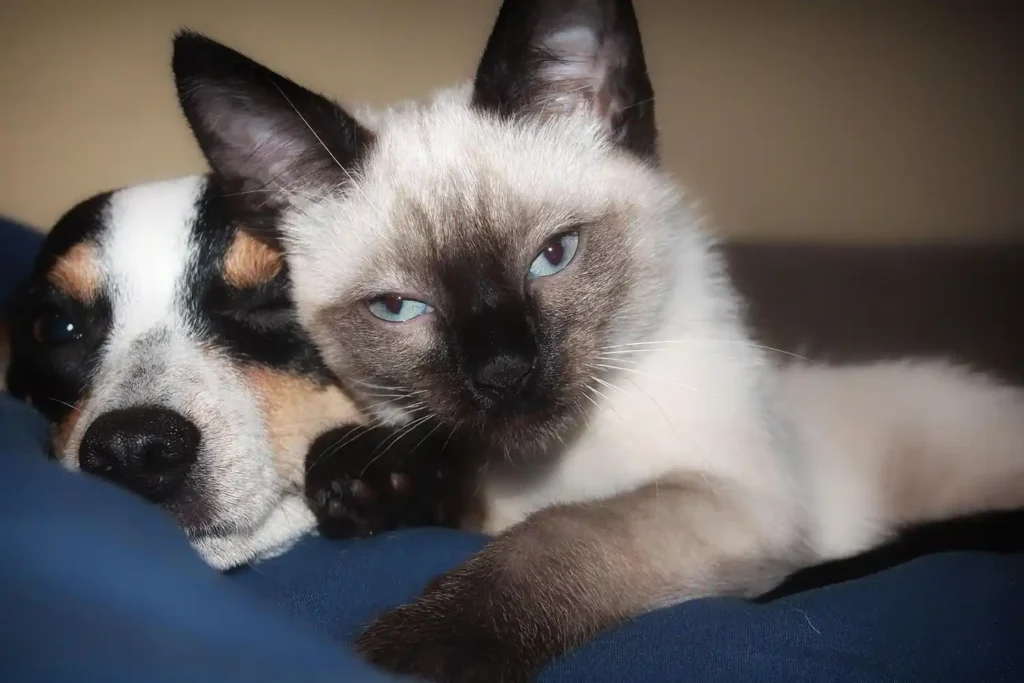
3. Siamese: The Devoted Cuddler
The Siamese cat, with its striking color points and sapphire blue eyes, is one of the most distinctive and vocal breeds in the feline world. Originally from Thailand (formerly Siam), these elegant cats are renowned for their extraordinary devotion to their human family and their unmistakable “conversations.”
Notable Traits:
- Strong vocal communication with a unique “talking” ability
- Deep emotional bonds with their chosen humans
- High intelligence and problem-solving skills
- Active and engaging personality
- Distinctive color points and sleek body type
- Heat-sensitive coat that darkens in cooler areas
🩺 Veterinary Insight: Siamese cats typically live 12-15 years and generally enjoy good health, though they can be prone to certain conditions including strabismus (crossed eyes) and dental issues. Regular dental care and annual check-ups are essential. Their slender build means maintaining a healthy weight is crucial to prevent obesity-related issues.
Perfect For:
- People who enjoy interactive cats
- Work-from-home professionals
- Active households
- Those wanting a conversation partner
- Families seeking an engaging pet
- Experienced cat owners
🐾 Tailwaggors Tip: Siamese cats form incredibly strong bonds with their humans and can become anxious if left alone for long periods. Consider adopting a pair or ensuring plenty of enrichment if you’re away during the day.
Daily Care Requirements:
- Mental stimulation: Puzzle toys and training sessions
- Physical exercise: Multiple play sessions daily
- Social interaction: Regular conversation and attention
- Basic grooming: Weekly brushing
- Environmental enrichment: Climbing spaces and window perches
- Regular nail trimming and dental care
Personality Highlights:
- Extremely vocal and communicative
- Devoted and attention-seeking
- Highly social with family members
- Intelligent and trainable
- Active well into senior years
- Strong need for companionship
Exercise and Mental Stimulation:
- Interactive play sessions (at least 20 minutes, twice daily)
- Clicker training opportunities
- Fetch games (many Siamese learn to retrieve)
- Puzzle feeders for mental engagement
- Agility courses and cat trees
- Social interaction games
Common Behavioral Traits:
- Will “talk” to get attention
- Follows their humans from room to room
- Shows strong interest in daily activities
- Demands regular interaction
- Forms strong bonds with one or two people
- Can be trained to walk on a leash
For more detailed information about living with these chatty companions, explore our ultimate guide to the Siamese cat breed, where you’ll find comprehensive care instructions and tips for managing their unique personality traits.
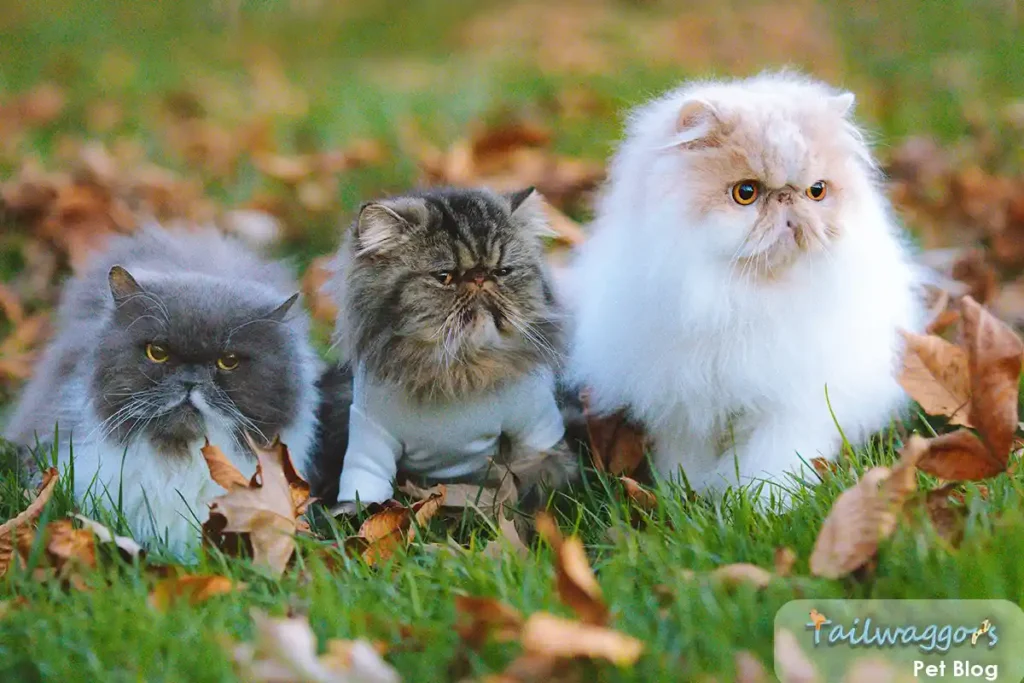
4. Persian: The Luxurious Lounger
The Persian cat, with its distinctive flat face and flowing coat, has long been considered the epitome of feline luxury. These regal cats, often called “living room lions,” combine stunning beauty with a serene personality that makes them perfect companions for those seeking a calm, affectionate pet.
Key Features:
- Calm, sweet nature ideal for relaxed households
- Perfect for quiet homes and indoor living
- Luxurious, long double coat requiring dedicated care
- Gentle disposition with a peaceful temperament
- Distinctive flat face and round eyes
- Low-activity level suited to apartment living
🩺 Veterinary Insight:
Persian cats typically live 12-16 years. Their brachycephalic (flat-faced) structure requires special attention to respiratory and eye health. Regular check-ups are crucial, particularly for polycystic kidney disease (PKD) screening, a condition more common in the breed.
Perfect For:
- Senior citizens
- Quiet households
- Indoor-only environments
- Patient grooming enthusiasts
- Apartment dwellers
- Those seeking a calm companion
🐾 Tailwaggors Tip:
While Persians are known for their relaxed nature, they still need daily grooming to prevent painful matting. Establish a regular grooming routine early to make it an enjoyable bonding experience.
Daily Care Requirements:
- Grooming: Daily brushing and coat maintenance
- Face cleaning: Twice daily to prevent tear stains
- Fresh water: Changed frequently due to flat face
- Regular dental care
- Climate control: Keep cool in warm weather
- Clean, accessible litter boxes
Essential Healthcare Focus:
- Regular tear duct cleaning
- Breathing monitoring
- Dental hygiene
- Skin fold maintenance
- Weight management
- Grooming-related health checks
For detailed care instructions, explore our guides on:
Personality Traits:
- Sweet and affectionate nature
- Quiet and undemanding
- Patient with gentle handling
- Content to lounge and observe
- Moderate playfulness
- Strong bonds with family
Special Considerations:
- High grooming commitment required
- May need specialized feeding bowls
- Regular veterinary monitoring recommended
- Temperature sensitivity
- Moderate exercise needs
- Indoor-only lifestyle preferred
🩺 Additional Health Notes: Due to their flat faces, Persians may experience:
- Breathing challenges in hot weather
- Difficulty eating from standard bowls
- Eye discharge requiring regular cleaning
- Potential dental overcrowding
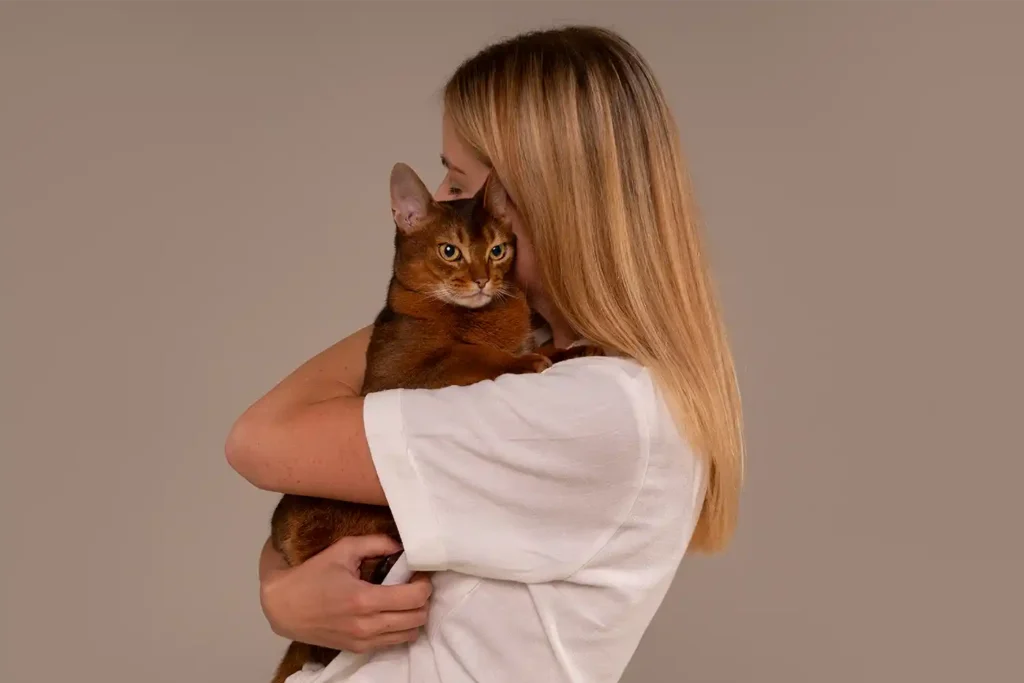
5. Abyssinian: The Playful Love Bug
Here’s an enhanced, SEO-optimized version of the Abyssinian section:
5. Abyssinian: The Playful Love Bug
The Abyssinian cat, often called the “Aby” by enthusiasts, represents the perfect balance of playful energy and affectionate companionship. With their distinctive ticked coat and graceful, athletic build, these active felines combine the curiosity of ancient Egyptian cats with the warmth of modern companion animals.
Distinctive Traits:
- Playful and energetic personality that lasts into senior years
- Highly intelligent with problem-solving abilities
- Loving personality with a unique blend of independence and affection
- Strong family bonds while maintaining an adventurous spirit
- Distinctive ticked coat with agouti coloring
- Athletic build and graceful movements
🩺 Veterinary Insight:
Abyssinians typically live 12-15 years. While generally healthy, they can be predisposed to certain genetic conditions including progressive retinal atrophy (PRA) and pyruvate kinase deficiency (PKDef). Regular veterinary screening helps ensure early detection and management of these conditions.
Perfect For:
- Active families
- Experienced cat owners
- Those wanting an interactive pet
- Homes with vertical space
- Multi-pet households
- People who enjoy training cats
🐾 Tailwaggors Tip:
Abyssinians thrive on interaction and mental stimulation. Create an enriching environment with climbing spaces, puzzle toys, and daily play sessions to keep them happy and prevent boredom-related behaviors.
Daily Care Requirements:
- Exercise: Multiple active play sessions daily
- Mental stimulation: Puzzle toys and training
- Grooming: Weekly brushing (more during shedding)
- Environmental enrichment: Climbing spaces and windows
- Social interaction: Regular attention and playtime
- High-quality nutrition for sustained energy
Activity and Exercise Needs:
- Interactive play sessions (30 minutes, 2-3 times daily)
- Climbing opportunities
- Puzzle feeders for mental engagement
- Window perches for bird watching
- Safe outdoor enclosures if possible
- Agility training opportunities
Personality Highlights:
- Curious and investigative nature
- Balanced independence and affection
- Strong interest in human activities
- Excellent problem-solving abilities
- Gentle yet playful disposition
- Natural athletic abilities
For more detailed information, explore our comprehensive guides:
Special Considerations:
- Need for vertical space
- Regular exercise requirements
- Mental stimulation importance
- Moderate grooming needs
- Social interaction demands
- Environmental enrichment necessities
🩺 Health Monitoring:
Key areas to watch include:
- Dental health (prone to gingivitis)
- Eye health (regular checks for PRA)
- Blood testing for PKDef
- Regular wellness examinations
- Weight management
- Vaccination schedule
Creating an Aby-Friendly Home:
- Install cat trees and wall perches
- Provide interactive toys
- Create viewing stations near windows
- Set up safe climbing routes
- Maintain consistent play schedule
- Establish quiet rest areas
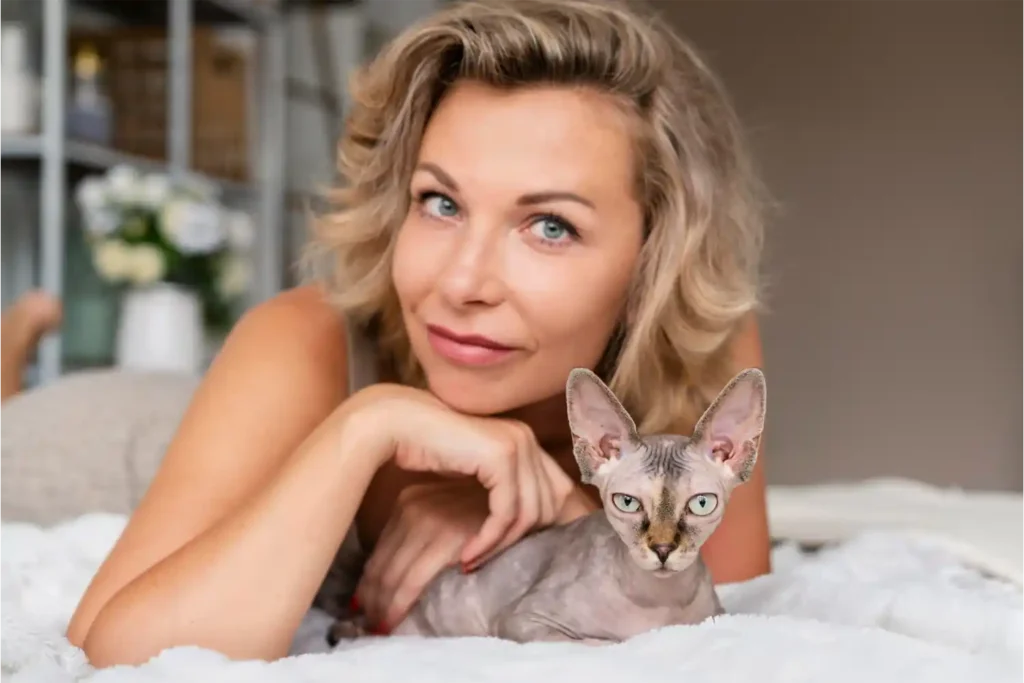
6. Sphynx: The Velvet Hugger
The Sphynx cat, with its distinctive hairless appearance, breaks the stereotype that cats are aloof. These unique felines are living proof that beauty is more than skin deep, combining an extraordinary need for human companionship with a warm, velvety touch that makes them natural cuddlers.
Standout Qualities:
- Exceptional need for human contact and cuddles
- Highly social and interactive personality
- Great with families and other pets
- Energetic and playful personality well into adulthood
- Temperature-sensitive nature requiring special care
- Distinctive wrinkled skin and large ears
🩺 Veterinary Insight:
Sphynx cats typically live 12-15 years. Their hairless nature makes them susceptible to certain skin conditions and temperature sensitivity. Regular veterinary check-ups are crucial, particularly for heart screening, as hypertrophic cardiomyopathy (HCM) can be more common in the breed.
Essential Skin Care Routine:
- Weekly baths with cat-specific shampoo
- Regular ear cleaning to prevent wax buildup
- Nail cleaning and trimming
- Sun protection when near windows
- Moisturizing as needed (vet-approved products)
- Cleaning skin folds to prevent infection
🐾 Tailwaggors Tip:
Create a warm environment with plenty of soft blankets and heating pads. Monitor sun exposure through windows, as Sphynx cats can sunburn easily despite being indoor pets.
Perfect For:
- Dedicated pet parents
- Work-from-home professionals
- Families seeking an interactive pet
- Those willing to maintain regular grooming
- Households with consistent temperature
- People wanting a unique companion
Daily Care Requirements:
- Temperature management: Maintain warm environment
- Skin care: Daily wiping with warm cloth
- Regular bathing: Weekly or bi-weekly
- Sun protection: Limited exposure
- High-quality nutrition: Supports skin health
- Plenty of warm sleeping spots
Personality Traits:
- Extremely affectionate and cuddly
- Highly intelligent and curious
- Energetic and acrobatic
- Social with family and visitors
- Strong need for attention
- Excellent with children and pets
🩺 Special Health Considerations:
- Temperature sensitivity
- Skin care needs
- Higher caloric requirements
- Heart health monitoring
- Regular dental care
- Potential sun sensitivity
Creating a Sphynx-Friendly Home:
- Maintain consistent warm temperature
- Provide multiple cozy beds
- Install window protection
- Create climbing spaces
- Set up warm sleeping areas
- Establish grooming station
Exercise and Enrichment:
- Interactive play sessions
- Climbing opportunities
- Puzzle toys for mental stimulation
- Social interaction games
- Agility training
- Temperature-safe sunbathing spots
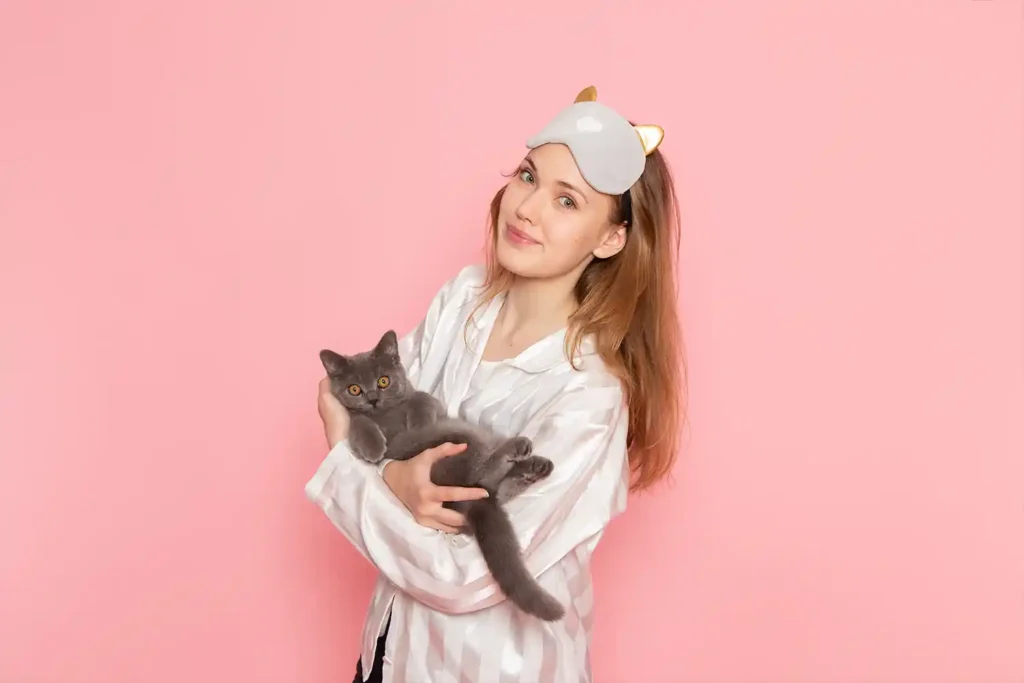
7. Russian Blue: The Loyal Shadow
The Russian Blue cat, with its plush double coat in striking silver-blue and mesmerizing green eyes, epitomizes quiet elegance combined with unwavering loyalty. These sophisticated felines offer the perfect balance of affection and independence, making them ideal companions for those who appreciate a subtle yet devoted presence in their lives.
Key Characteristics:
- Deep, devoted bonds with their chosen humans
- Gentle and patient nature with children
- Moderate activity level ideal for various households
- Reserved yet deeply loving personality
- Plush double coat requiring minimal maintenance
- Striking green eyes and silver-tipped blue fur
🩺 Veterinary Insight:
Russian Blues typically enjoy robust health with a life expectancy of 15-20 years, one of the longest among domestic cats. They have no breed-specific genetic health issues, making them an excellent choice for those seeking a healthy, long-lived companion.
Perfect For:
- Quiet, structured households
- First-time cat owners
- Work-from-home professionals
- Small families
- Senior citizens
- Those seeking a low-maintenance pet
🐾 Tailwaggors Tip:
Russian Blues excel in quiet households where they can develop strong, focused bonds with their family members. While shy with strangers, they become incredibly devoted to their chosen humans, often following them from room to room.
Daily Care Requirements:
- Grooming: Weekly brushing (more during seasonal shedding)
- Exercise: Moderate play sessions
- Mental stimulation: Puzzle toys and quiet games
- Quality time: Regular one-on-one attention
- Clean environment: Regular litter box maintenance
- Consistent routine: They thrive on predictability
Notable Personality Traits:
- Sensitive to human emotions
- Excellent emotional support companions
- Quiet and well-mannered
- Intelligent problem-solvers
- Shy with strangers
- Devoted to routine
Living Environment Needs:
- Quiet spaces for retreat
- Consistent daily routine
- Window perches for observation
- Scratching posts and climbing options
- Safe hiding spots
- Clean, organized spaces
🩺 Health Advantages:
- Generally healthy breed
- Low genetic health risks
- Good dental health
- Rarely overweight
- Strong immune system
- Long life expectancy
Building Trust With Your Russian Blue:
- Maintain consistent routines
- Respect their space initially
- Use gentle voices and movements
- Provide regular playtime
- Create predictable environments
- Allow them to approach visitors at their pace
Special Considerations:
- Adjustment period for new homes
- Sensitivity to environmental changes
- Preference for routine
- Need for quiet spaces
- Moderate exercise requirements
- Social bonding importance
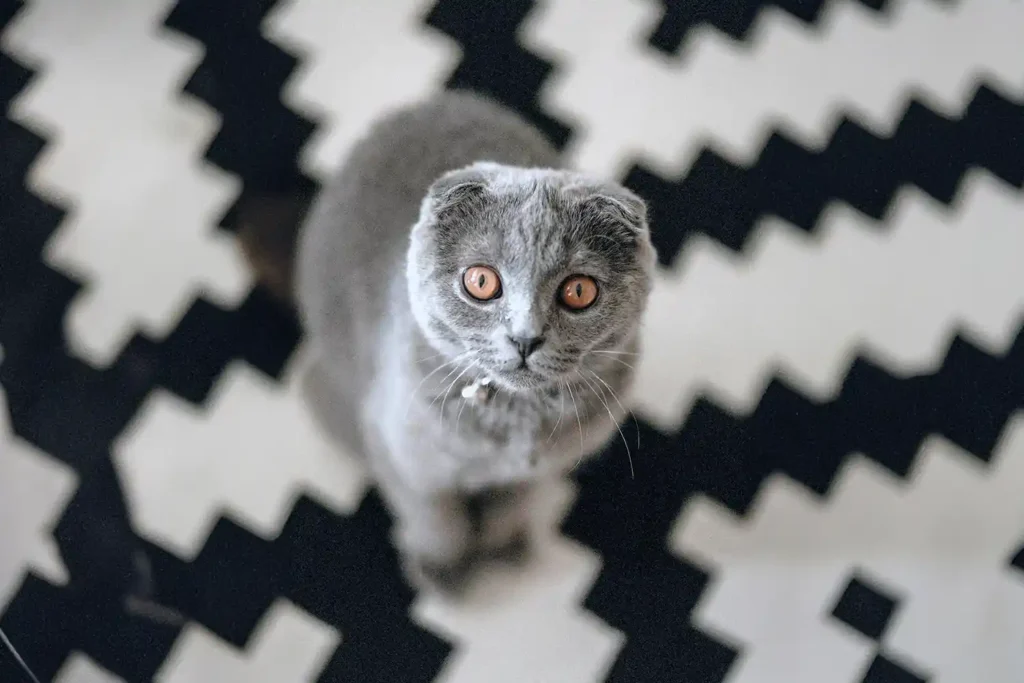
8. Scottish Fold: The Sweet Soul
The Scottish Fold, famous for their distinctive folded ears and owl-like appearance, captivates hearts with their extraordinarily sweet disposition. These charming cats combine unique physical characteristics with a gentle personality that makes them wonderful family companions.
Notable Traits:
- Adaptable personality suitable for various households
- Strong family bonds and devoted nature
- Moderate energy levels perfect for indoor living
- Patient temperament ideal for families
- Distinctive folded ears (in most cases)
- Round, expressive eyes
🩺 Veterinary Insight:
Scottish Folds require special veterinary attention due to their unique genetics. The gene responsible for their folded ears can affect cartilage throughout the body, potentially leading to osteochondrodysplasia. Regular skeletal health monitoring is essential for maintaining quality of life.
Perfect For:
- Families with children
- Multi-pet households
- Apartment dwellers
- Those seeking a gentle companion
- Work-from-home professionals
- First-time cat owners
🐾 Tailwaggors Tip:
Not all Scottish Fold kittens develop folded ears – about 50% have straight ears but maintain the same sweet personality. When choosing a Scottish Fold, focus on their temperament rather than ear shape.
Daily Care Requirements:
- Joint health monitoring
- Moderate exercise to maintain mobility
- Regular grooming sessions
- Mental stimulation activities
- Quality time with family
- Comfortable resting spots
Personality Highlights:
- Sweet and gentle disposition
- Devoted to family members
- Good with other pets
- Playful without being demanding
- Adaptable to new situations
- Enjoys interactive play
Special Health Considerations:
- Regular joint health checks
- Careful monitoring of mobility
- Proper weight management
- Ear cleaning and inspection
- Dental care requirements
- Exercise moderation
🩺 Important Health Note:
Due to their unique genetics, Scottish Folds should be monitored for:
- Joint stiffness or discomfort
- Movement limitations
- Ear infections
- Skeletal development
- Weight management
- Overall mobility
Creating an Ideal Environment:
- Easy access to favorite spots
- Multiple comfortable beds
- Low-impact climbing options
- Ground-level play areas
- Soft surfaces for comfort
- Temperature-controlled spaces
Exercise and Play:
- Gentle interactive games
- Low-impact activities
- Mental stimulation toys
- Social play sessions
- Moderate climbing opportunities
- Ground-level exploration
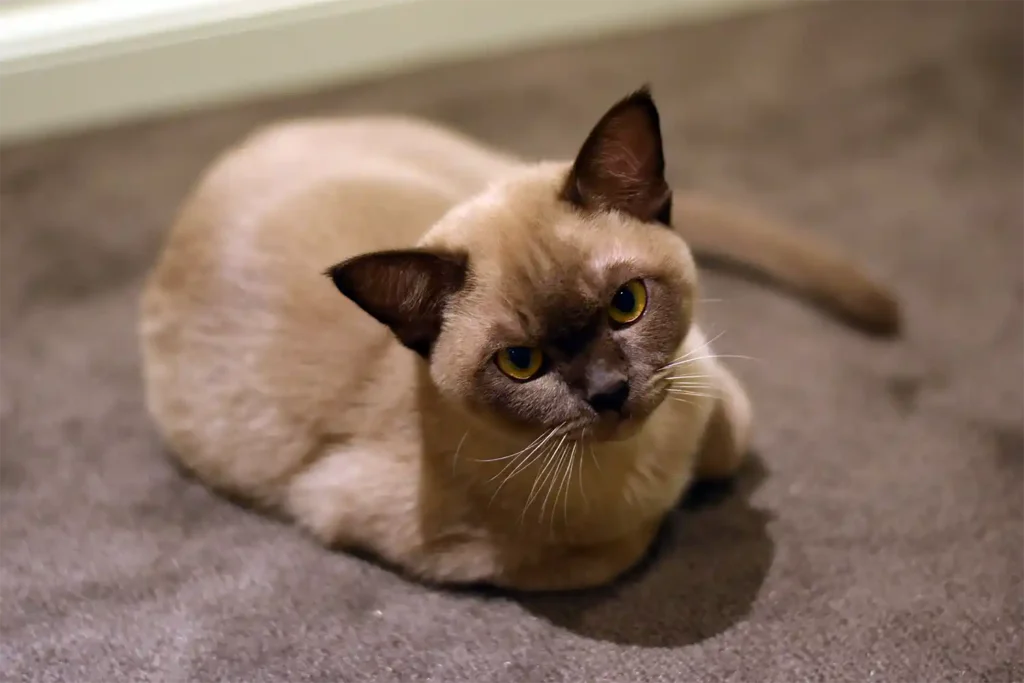
9. Burmese: The Devoted Shadow
The Burmese cat, affectionately nicknamed “velcro cats,” takes the concept of feline companionship to extraordinary levels. These devoted shadows combine the sleek elegance of their Siamese ancestors with an intense dedication to their human family that sets them apart from other breeds.
Distinctive Features:
- Exceptional loyalty bordering on devotion
- High social needs and family orientation
- Playful nature lasting well into adulthood
- Strong following behavior (true “velcro” cats)
- Muscular yet compact build
- Glossy, low-maintenance coat
🩺 Veterinary Insight:
Burmese cats typically live 12-16 years. While generally healthy, they can be prone to cranial deformities and glaucoma. Regular veterinary check-ups, especially eye examinations, are crucial for maintaining their health throughout their lives.
Perfect For:
- People wanting a constant companion
- Work-from-home professionals
- Active families
- Those seeking an interactive cat
- Multi-pet households
- Indoor-focused lifestyles
🐾 Tailwaggors Tip:
Burmese cats thrive on interaction and can become anxious if left alone for long periods. Consider adopting a pair or ensuring someone is home regularly to meet their social needs.
Daily Care Requirements:
- Social interaction: Regular attention throughout the day
- Exercise: Interactive play sessions
- Grooming: Weekly brushing (coat is relatively low-maintenance)
- Mental stimulation: Puzzle toys and training
- Environmental enrichment: Climbing spaces and windows
- Quality time: Lap time and cuddles
Personality Characteristics:
- Intensely devoted to their humans
- Highly intelligent and trainable
- People-oriented personality
- Playful well into senior years
- Excellent family cats
- Strong need for companionship
Social Needs:
- Regular human interaction
- Family involvement
- Playtime with companions
- Social sleeping habits
- Interactive mealtimes
- Constant presence preferred
🩺 Health Considerations:
Key areas to monitor include:
- Eye health (regular checks for glaucoma)
- Dental care (prone to gingivitis)
- Weight management
- Mental well-being
- Regular vaccinations
- Annual health screenings
Creating a Burmese-Friendly Home:
- Multiple interactive toys
- Comfortable perches near family areas
- Climbing opportunities
- Cozy sleeping spots
- Window viewing stations
- Social feeding areas
Exercise and Enrichment:
- Daily play sessions (multiple times)
- Training opportunities (they can learn tricks)
- Puzzle feeders for mental stimulation
- Social games with family
- Climbing activities
- Interactive toy rotation
Would you like me to add:
- More details about their rich history?
- Specific training techniques?
- Information about color variations?
- Tips for managing their social needs?
Key SEO Elements Included:
- Natural keyword integration
- Comprehensive care information
- Clear structure for readability
- Expert health insights
- Practical ownership tips
- Focus on their unique social nature
The section emphasizes the Burmese cat’s extraordinary devotion while providing practical advice for meeting their unique social and emotional needs.
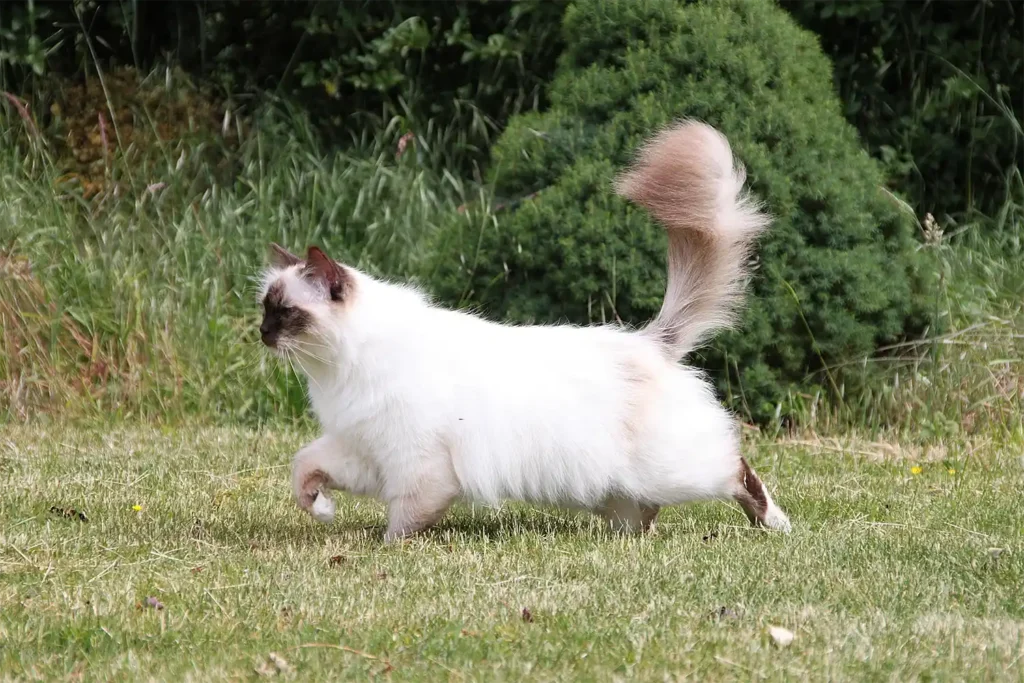
10. Birman: The Sacred Charmer
The Birman cat, revered as the “Sacred Cat of Burma,” embodies a perfect blend of ethereal beauty and heartwarming affection. With their striking color points, silky coat, and distinctive white “gloves,” these mystical felines combine exotic looks with a temperament that makes them ideal family companions.
Key Attributes:
- Gentle temperament perfect for families
- Strong social bonds with all family members
- Excellent compatibility with other pets
- Moderate grooming needs despite luxurious coat
- Distinctive white paws and color points
- Medium-sized, well-balanced build
🩺 Veterinary Insight:
Birmans typically live 12-16 years and are generally healthy cats. However, they can be predisposed to hypertrophic cardiomyopathy (HCM) and feline mucopolysaccharidosis. Regular cardiac screenings and health check-ups are recommended for early detection of any issues.
Perfect For:
- Families with children
- Multi-pet households
- First-time cat owners
- Those seeking a balanced personality
- People wanting a social yet gentle cat
- Homes with moderate activity levels
🐾 Tailwaggors Tip:
While Birmans are known for their striking appearance, their temperament is their true treasure. They excel at adapting to household routines and showing affection to all family members equally.
Daily Care Requirements:
- Grooming: Twice-weekly brushing
- Social interaction: Regular family time
- Exercise: Moderate play sessions
- Mental stimulation: Interactive toys
- Environmental enrichment: Climbing spaces
- Regular health monitoring
Notable Personality Traits:
- Balanced affection levels
- Gentle and patient nature
- Strong social awareness
- Good with visitors
- Adaptable personality
- Quiet yet communicative
Creating a Birman-Friendly Environment:
- Comfortable resting spots
- Moderate climbing options
- Interactive play areas
- Quiet retreat spaces
- Window perches
- Social feeding stations
🩺 Health Monitoring:
Key areas to watch include:
- Heart health
- Dental care
- Weight management
- Joint health
- Eye condition
- Coat maintenance
Exercise and Play:
- Interactive toys
- Gentle play sessions
- Family involvement games
- Social activities
- Moderate climbing
- Mental stimulation games
Special Characteristics:
- Color point coat pattern
- Distinctive white gloves
- Blue eyes
- Silky, medium-length fur
- Sturdy, medium build
- Graceful movement
Detailed Breed Comparison
Whether you’re a first-time cat owner or an experienced pet parent, understanding how these breeds compare can help you make the right choice for your lifestyle.
- Families with children
- First-time cat owners
- Senior citizens
- Multi-pet households
- Weekly brushing to prevent matting
- Regular nail trimming
- Indoor-only lifestyle recommended
- Daily interaction and playtime
- Monitor for heart conditions
- Regular dental care needed
- Watch for hip dysplasia
- Annual health screenings
- Cat trees for climbing
- Comfortable resting spots
- Interactive toys
- Scratching posts
- Active families
- Experienced cat owners
- Homes with space
- Patient owners
- Daily grooming recommended
- Large litter box required
- High-quality protein diet
- Regular exercise needed
- Monitor for hip dysplasia
- Watch for heart conditions
- Regular joint health checks
- Dental care important
- Large cat trees
- Sturdy scratching posts
- Interactive puzzle toys
- Window perches
- Interactive owners
- Work-from-home individuals
- Active households
- Experienced cat owners
- Regular mental stimulation
- Basic grooming weekly
- Frequent interaction required
- Temperature-controlled environment
- Monitor for respiratory issues
- Watch for dental problems
- Regular eye examinations
- Check for crossed eyes
- Interactive toys essential
- Climbing opportunities
- Warm sleeping spots
- Puzzle feeders recommended
- Quiet households
- Patient groomers
- Indoor-only environments
- Dedicated cat owners
- Daily grooming required
- Regular face cleaning
- Eye care maintenance
- Controlled environment needed
- Monitor breathing patterns
- Regular tear duct cleaning
- Watch for dental issues
- Temperature sensitivity
- Low-height furniture
- Multiple resting areas
- Gentle play toys
- Clean, controlled spaces
- Active families
- Experienced cat owners
- Spacious homes
- Interactive households
- Weekly brushing
- High activity requirements
- Mental stimulation needed
- Quality diet essential
- Monitor dental health
- Watch for gingivitis
- Regular eye checks
- Annual health screenings
- Vertical climbing spaces
- Interactive toys
- Puzzle feeders
- Window perches essential
- Dedicated owners
- Stay-at-home individuals
- Temperature-controlled homes
- Experienced cat owners
- Weekly bathing required
- Regular skin moisturizing
- Sun protection needed
- Temperature monitoring
- Skin condition monitoring
- Heart health screening
- Temperature sensitivity
- Regular nail cleaning
- Warm sleeping areas
- Indoor-only lifestyle
- Soft bedding essential
- Cat clothes for warmth
- Quiet households
- Work-from-home individuals
- First-time cat owners
- Single-pet homes
- Weekly brushing
- Routine playtime
- Consistent schedule
- Quiet environment
- Monitor weight
- Dental hygiene
- Regular check-ups
- Stress management
- Quiet retreat spaces
- Window perches
- Scratch posts
- Private sleeping areas
- Family environments
- Multi-pet households
- Gentle handlers
- Indoor-focused homes
- Regular ear cleaning
- Weekly grooming
- Joint health monitoring
- Gentle exercise routine
- Ear health monitoring
- Joint mobility checks
- Regular vet visits
- Skeletal development
- Low-height furniture
- Easy-access litter boxes
- Gentle play toys
- Comfortable bedding
- Active households
- Social families
- Work-from-home individuals
- Multi-pet families
- Occasional brushing
- Regular playtime
- Social interaction
- Mental stimulation
- Cranial deformity screening
- Eye health monitoring
- Dental care
- Weight management
- Climbing structures
- Interactive toys
- Social spaces
- Puzzle feeders
- Family settings
- First-time owners
- Senior citizens
- Multi-pet homes
- Weekly brushing
- Regular nail trimming
- Moderate exercise
- Social interaction
- Heart health monitoring
- Kidney function checks
- Regular eye exams
- Dental care
- Cat trees
- Interactive toys
- Social spaces
- Quiet retreats
Health, Safety & Bonding Tips
Looking after an affectionate cat breed? Just like us, these loving companions need proper care to thrive. Our veterinary-approved guide helps you create the perfect environment for your affectionate cat to flourish.
Essential Health Care for Affectionate Cat Breeds
Your affectionate cat’s health needs regular attention. Our veterinary research shows these cats often mask illness due to their social nature. Key care elements include:
- Regular wellness check-ups with your veterinarian
- Daily health monitoring at home
- Proper nutrition for active social cats
- Mental health and environmental enrichment
- Preventive care schedules
🩺 Veterinary Alert: Monitor these key health indicators in affectionate cats:
- Changes in social interaction patterns
- Alterations in eating or drinking habits
- Variations in litter box behavior
- Unexpected changes in grooming routines
- New vocalization patterns
Essential Safety Resources for Cat Parents
Keep your affectionate cat safe with our expert-reviewed guides:
- Emergency care for affectionate cats
- Preventing common cat poisonings
- Cat-safe plants guide
- Multi-pet household tips
Strengthening Bonds with Affectionate Cats
Develop a deeper connection with your social feline through:
- Trust-building exercises
- Consistent daily routines
- Positive reinforcement techniques
- Interactive play sessions
- Quality bonding time
🐾 Expert Bonding Tip: Research shows that affectionate cats respond best to gradual relationship building. Let them guide the pace of physical interaction for optimal bonding results.
Discover more in our comprehensive guides:
Frequently Asked Questions About Affectionate Cat Breeds
How do I choose the most affectionate cat breed for my family?
+Choosing the right affectionate cat breed depends on several factors:
- Your lifestyle and available time for interaction
- Living space and environment
- Experience with cats
- Presence of other pets or children
- Grooming commitment level
🐾 Tailwaggors Tip:
Consider meeting different breeds at local shelters or reputable breeders before making your decision. This hands-on experience can help you gauge personality compatibility.
Do affectionate cat breeds require more attention than other cats?
+Yes, typically affectionate breeds need more social interaction and attention. Breeds like Siamese and Sphynx cats especially crave human company and may become stressed if left alone for long periods.
🩺 Veterinary Insight:
“Social cats can develop anxiety or depression if their emotional needs aren’t met. Consider getting two cats if you’re away from home frequently,” advises Dr. Esther.
Are affectionate cat breeds good with children?
+Many affectionate breeds are excellent with children, particularly:
- Ragdolls – Known for their patience and gentle nature
- Maine Coons – Typically very tolerant and good with kids
- Birmans – Generally calm and accepting of children
🐾 Tailwaggors Tip:
Always supervise interactions between cats and young children, and teach children proper ways to handle and respect cats.
What are the grooming requirements for affectionate cat breeds?
+Grooming needs vary significantly among affectionate breeds:
- High Maintenance: Persian, Maine Coon
- Moderate: Ragdoll, Birman
- Low: Russian Blue, Burmese
- Special Care: Sphynx (requires regular skin care)
🩺 Veterinary Insight:
“Regular grooming not only maintains coat health but also strengthens the bond between you and your cat. It’s an excellent opportunity for quality time together.”
Can affectionate cats live in apartments?
+Most affectionate breeds adapt well to apartment living, particularly:
- Ragdolls – Perfect for indoor life
- Russian Blues – Content in smaller spaces
- Birmans – Adapt well to any living situation
🐾 Tailwaggors Tip:
Enrich your indoor environment with cat trees, window perches, and interactive toys to keep your cat stimulated and happy.
How much do affectionate cat breeds typically cost?
+Initial costs vary by breed and source:
- Ragdoll: $800-$2,000
- Maine Coon: $1,000-$2,500
- Siamese: $600-$1,500
- Persian: $1,200-$2,200
🩺 Veterinary Insight:
“Remember to factor in long-term costs including veterinary care, quality food, grooming supplies, and potential breed-specific health issues.”
Do affectionate cats get along with dogs?
+Many affectionate cat breeds are known for their dog-friendly nature, particularly:
- Maine Coons – Often called “dog-like” cats
- Ragdolls – Generally accepting of dogs
- Abyssinians – Active and playful with canine friends
🐾 Tailwaggors Tip:
Always introduce pets gradually and supervise their interactions initially. Check our guide on helping dogs and cats coexist for detailed advice.
Conclusion: Finding Your Perfect Affectionate Companion
Whether you’re drawn to the gentle Ragdoll, the chatty Siamese, or the velvet-touch Sphynx, choosing an affectionate cat breed brings the promise of a devoted, loving companion. Remember that while breed characteristics can guide your choice, each cat’s unique personality and your dedication to their care ultimately shape your bond.
🩺 Veterinary Insight:
As a veterinarian, I’ve seen countless successful matches between these affectionate breeds and devoted owners. The key to success lies in understanding your chosen breed’s specific needs and committing to their long-term care and well-being.
Before Making Your Choice:
- Consider your lifestyle and available time
- Evaluate your home environment
- Review breed-specific health requirements
- Assess grooming commitments
- Calculate long-term care costs
- Plan for regular veterinary care
🐾 Final Tip:
Take time to meet different cats and consider adoption options. Many of these affectionate breeds can be found through breed-specific rescues and shelters, waiting for their forever homes.
Next Steps:
- Read our complete guide to cat-proofing your home
- Review our new cat supply checklist
- Learn about preventing common health issues
- Explore proper nutrition guidelines
Remember, bringing home an affectionate cat isn’t just adding a pet to your household – it’s welcoming a loving family member who will enrich your life with years of companionship, affection, and joy.
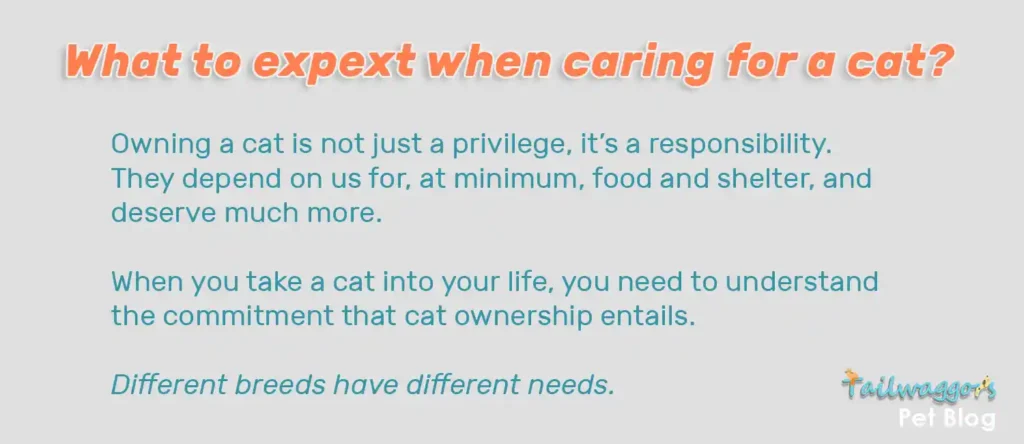
Want to share you cute cat moments? Contact us.
🐾✨ Explore their personalities, care needs, and what makes them the best cuddle buddies!
📢 Share this guide with fellow cat lovers and let us know—does your cat love snuggles? 🐱❤️





